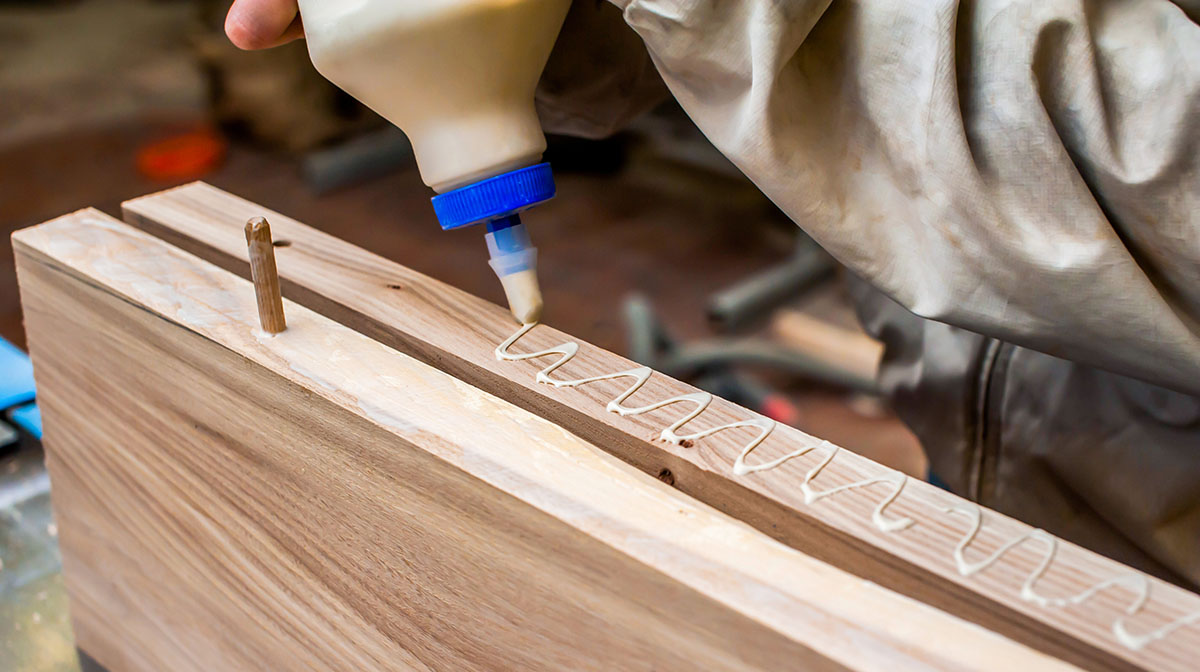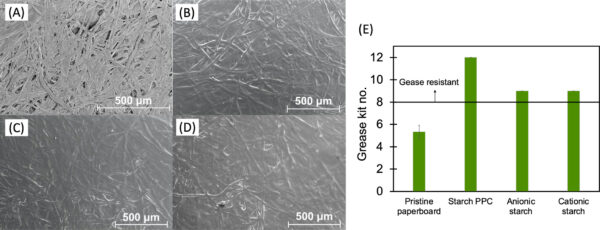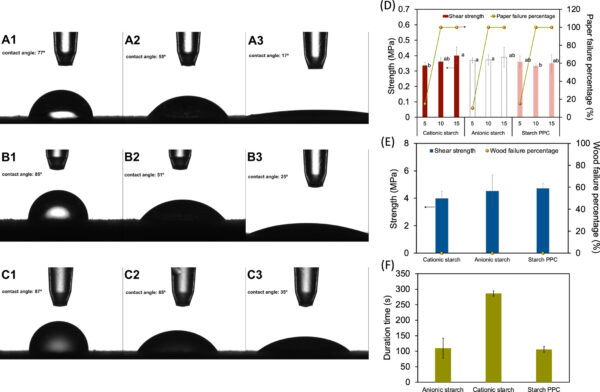Starch-Based Alternatives to Conventional Adhesives

Starch-based polyelectrolyte complexes can be considered a sustainable step forward in packaging adhesives.
Many petrochemical adhesives emit toxic volatiles, raising health concerns, especially in materials designed for direct food contact applications. Also, many industries that depend on adhesives, especially in packaging and wood products, now face pressure to adopt sustainable and safer alternatives.
You can also read: StarCrete: A Starch Biocomposite for Space Construction.
In response to this challenge, Lin and Catchmark developed starch-based polyelectrolyte complex (PPC) adhesives with improved water resistance and paper performance. These biodegradable PPCs offer an eco-friendly alternative that supports regulatory compliance and reduces reliance on petroleum-based chemical binders.
A Greener Alternative to Conventional Adhesives
The researchers synthesized PPCs by blending anionic and cationic starches into electrostatically bound networks with tunable charge interactions.
Compared to native starch, the resulting PPCs exhibited enhanced hydrophobicity and significantly lower solubility under various pH conditions. UV-Vis turbidity analysis identified the optimal charge ratio—1:2 anionic to cationic starch—that yields the most stable complex. This complexation promoted internal bonding between polymer chains, contributing to superior moisture resistance and coating integrity. Notably, PPCs achieved 93.2% greater water resistance than neat starches, supporting their use in moisture-sensitive packaging applications.
Barrier and Surface Properties on Paperboard
The study demonstrates the grease resistance of PPC-coated paperboard compared to both uncoated and commercially wax-coated samples.
The PPC coating exceeded the TAPPI T559 kit no. 8 standard, a benchmark for grease barriers in food packaging materials. As a result, the PPC surface showed enhanced performance in resisting grease penetration and improving shelf-life for packaged goods. The SEM image inset in Figure 4 displays a smooth and defect-free PPC film across the paperboard surface. This uniform morphology plays a key role in forming a protective barrier against moisture, oil, and environmental contaminants. Therefore, PPC coatings emerge as strong alternatives to synthetic waxes and plastics in food-grade paper packaging.

Barrier performance of starch and starch PPC coated paperboards. Surface morphology of paperboard coated with anionic starch (A), cationic starch (B), starch PPC (C), and pristine paperboard (D) collected by SEM. Grease resistance of starch and starch PPC coated paperboard (E). Courtesy of Improved starch adhesives for packaging and wood products.
Bonding Strength on Paper and Wood
Evaluating the bonding strength of PPC adhesives on both paper and wood substrates under standardized testing conditions is essential.
On paper, a 10 g/m² PPC application resulted in 100% paper failure, confirming exceptional adhesive strength at low coating levels. This outcome indicates that the adhesive bond surpassed the internal strength of the paper, a gold standard in bonding performance. However, PPC performance on wood substrates was weaker, achieving only ~4.5 MPa shear strength compared to cationic starch adhesives. Researchers linked this limitation to lower wettability, as PPCs formed higher contact angles and showed limited surface penetration on wood. Still, the materials demonstrated sufficient cohesion, and they may perform better with adjusted charge densities or modified surface functionalities.

Joint performance of neat starch and starch PPC. Contact angle between anionic starch (A), cationic starch (B), and starch PPC (C) and wood at 1 s (A1-C3), 10 s (A2-C2), and 120 s (A3-C3). Tensile shear strength of neat starch and starch PPC with paper substrate (D). Tensile shear strength of neat starch and starch PPC with wood substrate (E), and tensile creep duration time in water bath (F). Courtesy of Improved starch adhesives for packaging and wood products.
Toward Scalable, Sustainable Adhesive Solutions
Starch-based PPCs offer a compelling balance of biodegradability, safety, and material performance for paper and packaging applications. Although current formulations underperform in wood bonding, they show great promise with further molecular tuning or processing optimization. Consequently, PPC adhesives represent a significant step toward replacing fossil-derived glues with renewable, food-safe alternatives for industrial use.
